Terry Myerson, Corporate Vice President of Windows Phone Division, explained Microsoft's new smartphone strategy earlier at Nokia's press conference.
At the present time, WP7 trails Android and iOS in terms of market share by a decent figure, but Microsoft still has ambitions to be number one or two within the next couple of years. To that end, the minimal hardware specifications for WP7 have been lowered. According to Terry, the requirement is now a SoC with performance greater than or equal to Qualcomm's 800 MHz 7x27A S1 Snapdragon and 256 MB of RAM. This increases Microsoft's potential customer base by 60 percent.
Microsoft's announcement ties in perfectly with Nokia's Lumia 610 release, which is purportedly going to retail for between $100 and $150. However, this won't be the only budget oriented WP7-based smartphone. In our discussions with Microsoft, we were clearly told that more will be launched soon.
This is a better strategy in our opinion. Microsoft can't expect to only play for the high-end smartphone market. In order for WP7 to be truly successful, it must be adopted by the wider public.
Wide Family of 1.0 GHz + WP7-based Smartphones
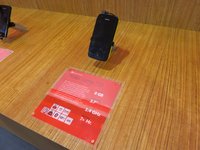
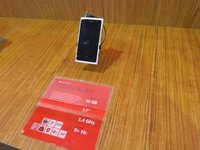

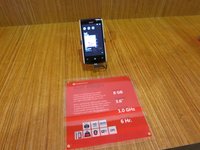


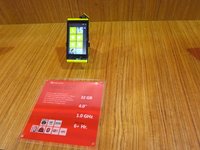



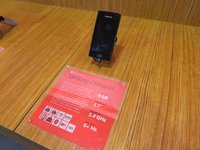
We're still not sure now feasible this strategy will be in the long term. While the Lumia 610 has an attractive price tag, it also is a little slow when hammered with high processing tasks. For example, input lag exceeds 300 ms if you if you try to scroll an app when it starts up. This is a phenomenon we first noticed on the Lumia 710, but it applies much more to the 610's reduced hardware performance profile.
Hopefully, Microsoft is able to make further optimizations to compensate for the lowered hardware requirements of WP7. While it's appealing to pay less, we don't think that should come at the expense of a snappy and fast Metro interface.
Get Tom's Hardware's best news and in-depth reviews, straight to your inbox.
-
eddieroolz I think Microsoft needs to be more swift in updating its hardware requirements, or abandon it altogether. It has been nearly two years since the introduction of WP7 if I'm not mistaken, and this is its first update which is unacceptable. Though I realize WP7 runs a lot smoother on less hardware (read: not a bloatware like Android is) having such an outdated hardware specification is not going to help keep up to the competition.Reply -
cknobman Microsoft, my wife and I are joining your camp in the coming months. Android has pissed me off for the last time.Reply
Keep the controls on your OS so carriers can skin it and keep your phones updated with software and that is all I want.
We are sick and tired of the broken, fragmented, shoddy supported likes of the Android world. -
long2know I remember when I had my TyTn2 (AT&T Tilt) hacked to run Android. The device had a 400 mhz processor and 128MB of RAM. It ran OK, but was unbearable at times. I think if it had had 256MB of RAM and a slightly faster (600 MHz) processor - similar to what is being discussed here - it would have run just fine.Reply -
Nothing will come of all Microsoft's talk if they can't get a tolerable Windows Phone on Verizon's network - like it or not, VZW is a huge player in North America, and the current WP offering (HTC Trophy) is truly abysmal.Reply
-
ojas Win8+Medfield+full (desktop) windows 7/8 integration = MS can have my money, otherwise...i don't know what i'll do, stick with symbian :(Reply -
tntom They need to focus on the value market in my opinion. Why? because that is where WP does more with less hardware. Nobody else can compete there especially Apple because they focus for now on one model and their consumer base demands that things like Siri (requires high-end HW) just work and be ubiquitous. Aside from serious enthusiasts most people will not see the need to drop big cash for top of the line phones. Especially the 50 and up non-enthusiast group. My parents and grandparents represent one of the fastest growing segments and only WP7 really fits usability and price requirements for that segment.Reply
I have both a WP7 and Android with ICS. -
sync_nine Just like to point out some lies in the cards there.Reply
Nokia Lumia 710 comes with a 1300 mAh battery and Nokia Lumia 800 comes with a 1450 mAh battery.
On the other hand Samsung Omnia W comes with a 1500 mAh battery and an AMOLED screen (Lumia has a LCD screen) which is far better than the LCD in terms of power consumption. But then how come the Lumia 710 has a talk time of 7 hours, Lumia 800 of 9 hours and the Omnia W of 6 hours?
It doesn't add up.
Specs wise those three phones have no big difference hardware wise (except the 16 GB memory of Lumia 800) and the only difference point is the battery which is in my opinion a big factor.
Here is the proof to back up my claim
http://www.crazy4cellphones.com/blog/nokia-lumia-710-vs-samsung-omnia-w-8350.html
"In battery performances the Samsung Omnia W has larger capacity with li-ion 1500 mAh battery, the 200 milliamps doesn’t sound that much but its still better than the Nokia Lumia 710 li-ion 1300 mAh battery. With the web browsing test the Omnia W survived with a whopping 2 hours 40 minutes than the Lumia 710. This is all because of the bigger battery and power saving Super AMOLED technology. Even in video playback the Lumia was underperformer in front of Omnia. The Samsung Omnia W played continuous video playback for 7 hours 49 minutes but the Nokia Lumia 710 only for 3 hours 27 minutes. Again thanks to the Super AMOLED display." -
edlivian the projected numbers for worldwide sales for blackberryos and windows mobile seem a little off.Reply
I do not believe Rim will sell an additional 30% in 2012 compared to 2011.
Windows mobile I am not so sure about, because there will be plenty of people leaving the android and ios camps in order to try out new software. But relatively few will leave ios and android for blah-berry (been there done that)



